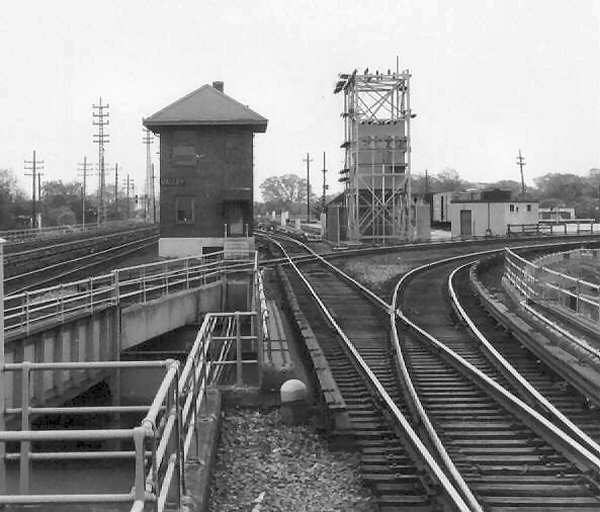OK . . . . .
Here we go:
I can’t tell you about the location of the “original” Valley Stream depot without major research, but the 2nd Valley Stream depot, the one in service until the 1933 grade crossing elimination, was located south of the Montauk branch tracks and on the west side of the Rockaway Avenue crossing, with a low platform along the Montauk branch tracks (north and south sides) and a curved low platform along the east leg of the wye, south of the Montauk branch, connecting the Far Rockaway branch with the Montauk branch. The wye made its connection to the Far Rockaway branch directly across Roosevelt Avenue.
There were also low, curved platforms with shelter sheds along the #1 and #2 tracks of the Far Rockaway branch. These were located north of Roosevelt Avenue and East of Franklin Avenue, about where Sunrise Highway now passes under the LIRR.
The lay-up yard, consisting of eight (8) tracks, was located west of the depot, also south of the Montauk branch tracks and east of Franklin Avenue. An electric sub station, designated #9A, was constructed in 1930 between the yard tracks and the east leg of the wye.
“VA” tower was located south of the Montauk branch tracks and at the very west end of the station platform.
The freight house was located south of the Montauk branch tracks on the west side of Franklin Ave. There was a house track and 2 team tracks. This would be where the south parking lot of the depot now stands.
The water tower and plug were south of the Montauk branch tracks on the east side of the Rockaway Avenue crossing and east of the east leg of the wye where it joined the Montauk branch.
Sunrise Highway did not cross the Far Rockaway branch prior to the 1933 grade elimination. (The station platforms on the Far Rockaway tracks and part of the lay-up yard were located where it later would cross under the tracks.)
After the grade elimination of 1933, the Far Rockaway tracks remained in their same locations. The east leg of the wye, however, was removed. and the tracks were elevated over Roosevelt Avenue as well as the new Sunrise Highway extension.
The station stop was relocated west of Franklin Avenue, with the new, elevated structure crossing Franklin Avenue and part of the elevated platform being located over Hicks Street.
Sub-station #9A appears to be in its same location. A new freight house with house track and two (2) team tracks were constructed on the site of the old lay-up yard, only now elevated.
A new “VA” (later “VALLEY”) tower was built slightly further west of its original location.

This photo, looking east, shows both the tower and the team tracks with freight cars in the background. The small power plant IS NOT substation #9A.
As for the Sunrise Highway bridge of which you spoke: I don't believe that bridge was ever part of the LIRR system. I believe it was constructed solely for highway use.
Dave Keller
